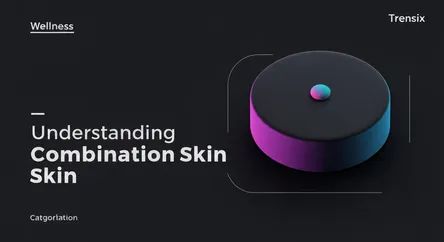Wellness
Understanding Combination Skin

Learn what combination skin is, why it's a common concern, and how to properly care for a complexion that's both oily and dry.
What is it?
Combination skin is a common skin type characterized by having both oily and dry areas on the face. Typically, this manifests as an oily "T-zone," which includes the forehead, nose, and chin, while the cheeks and jawline remain normal or dry. This occurs due to an uneven distribution of sebaceous (oil) glands, which are more concentrated in the T-zone. Factors like genetics, hormonal changes, and even the weather can influence this skin type, causing it to feel slick in some spots and tight or flaky in others.
Why is it trending?
Caring for combination skin is a popular topic because it presents a unique challenge: finding products that can address conflicting needs simultaneously. The skincare industry is responding with innovative, targeted solutions and multi-masking techniques. There's a growing trend towards personalized skincare, with consumers seeking routines that cater to their multifaceted complexion rather than a one-size-fits-all approach. As people become more educated about their skin, the demand for lightweight, balancing ingredients like hyaluronic acid and niacinamide has surged, making the conversation around managing combination skin more relevant than ever.
How does it affect people?
Living with combination skin requires a strategic and often flexible skincare routine. Individuals may need to use different products on different parts of their face—for instance, a lightweight, oil-free moisturizer on the T-zone and a richer cream on dry cheeks. This skin type can also change with the seasons, often becoming oilier in the summer and drier in the winter, requiring adjustments to one's daily regimen. People with combination skin often focus on achieving balance, using gentle cleansers, non-abrasive exfoliants like salicylic acid, and hydrating, non-comedogenic products to manage shine without stripping moisture from drier areas.